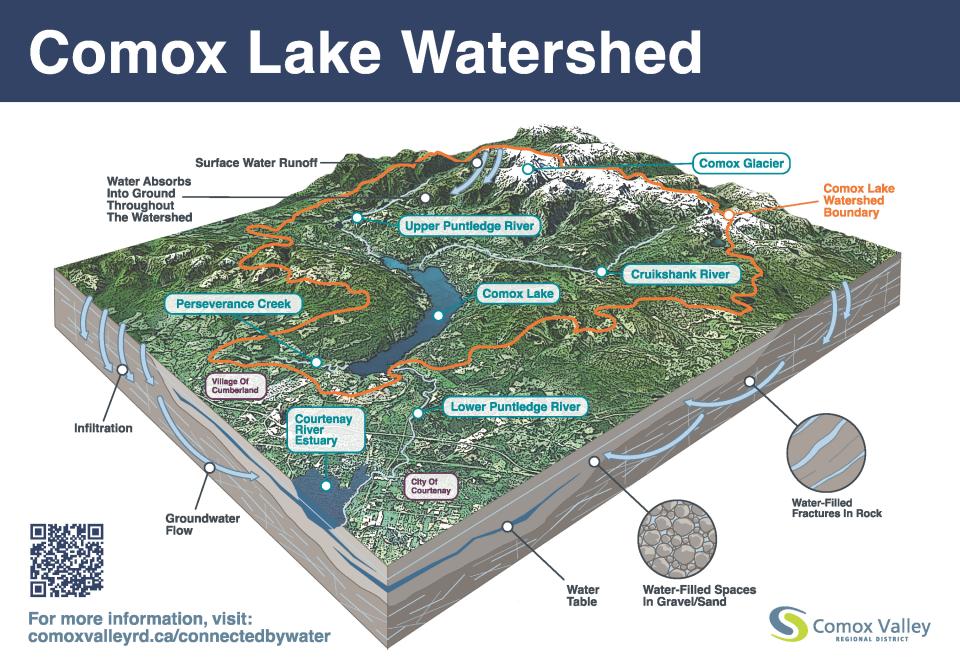About the Comox Lake Watershed
The Comox Lake Watershed is located in the unceded territory of the K'ómoks First Nation and has been an important area for traditional and cultural activities since time immemorial. This interconnected system of forests, rivers, creeks, and wetlands links Vancouver Island mountains with the Salish Sea. This watershed sustains life in this territory and therefore its value is immeasurable. The Comox Lake watershed also provides drinking water for over 50,000 residents within the Comox Valley.

For over 140 years, logging, mining, hydro generation, and recreation activities have taken place in the Comox Lake watershed, and many of these activities continue to have impacts. Although coal mining operations ended in the 1930’s, much of the watershed is still privately owned and managed for timber supply. The lake is also a reservoir controlled by BC Hydro for power generation and fish flows in the Puntledge River.
Swimming, boating, sporting events, training exercises, and camping still take place at limited sites along the eastern end of the lake, and all these activities can impact the health of our watershed. Demand for access to Comox Lake is only increasing as the local population grows and visitation increases. While small areas have been set aside for conservation, much of the watershed is still vulnerable to further impacts. Visitors can help reduce these impacts by staying on trails, using public toilets, camping only where permitted, and packing out everything they bring in.
As part of our Watershed Protection Education our school and community educators are available for engaging presentations for groups of all ages and backgrounds.
About Connected by Water
Connected by Water is a Comox Valley Regional District (CVRD) program that was developed in response to the community education and engagement recommendations in the Comox Lake Watershed Protection Plan. The goal of this program is to build capacity, community and connection to support watershed protection and water conservation efforts.
Working with community stakeholders and knowledge holders, the Connected by Water team has developed curriculum resources, workshops, tours, presentations and a framework for discussion and learning that responds to the questions:
“What makes a climate resilient watershed?”
“What makes it possible for me to have safe water to drink?”
What is Climate Resilience?
Climate resilience is the ability of a system to respond and adapt to the impacts of climate change. In the Comox Lake watershed, climate change is impacting winter precipitation and freezing levels (rain / snow dynamics), summer droughts, and the health of plants, animals and ecosystems. Building climate resilience is a top priority in the Comox Lake Watershed Protection Plan recommendations.








